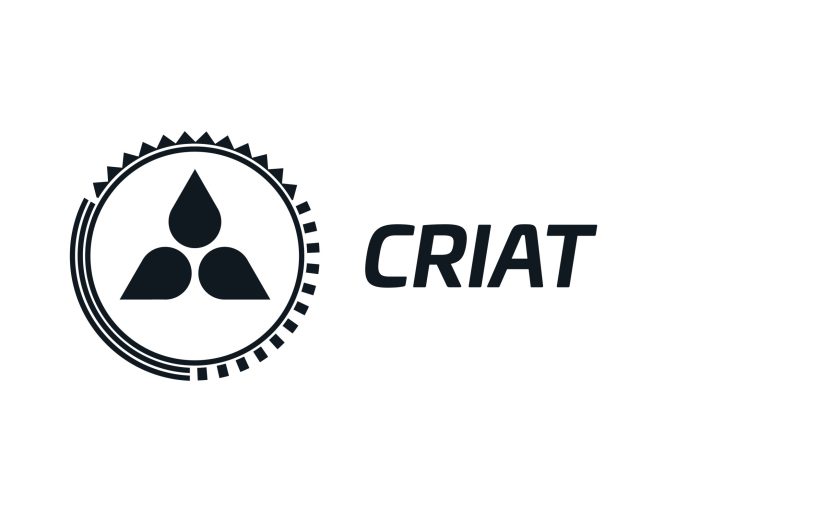CRIAT – The Consortium for Robotics, Intelligence and Automation Technologies › Forums › CRIAT › Draft Constitution
-
AuthorPosts
-
-
19 July 2023 at 12:17 pm #527
 Bruno SousaKeymaster
Bruno SousaKeymasterPreamble:
The Consortium for Robotics, Intelligence, and Automation Technologies (CRIAT) is established as a collaborative platform dedicated to advancing the fields of robotics, intelligence, and automation. CRIAT strives to foster innovation, collaboration, and responsible development to shape a sustainable and inclusive future.
Article 1: Name and Nature of the Organization
1.1 Name: The organization shall be known as the Consortium for Robotics, Intelligence, and Automation Technologies (CRIAT).
1.2 Nature: CRIAT is a profit-oriented entity committed to being a force for good, contributing to a sustainable and inclusive economy through research, development, collaboration, and knowledge exchange in the areas of robotics, intelligence, and automation technologies.
1.3 Slogan: Harnessing technology for a sustainable and inclusive future.
Article 2: Vision and Mission
2.1 Vision: To be a leading global hub for research, innovation, and collaboration in robotics, intelligence, and automation, striving to generate positive social and environmental impact while advancing technological advancements.
2.2 Mission: CRIAT aims to:
- – Advance the frontiers of knowledge
- – Develop cutting-edge multi-vendor solutions
- – Influence policy-making
- – Create a repository of knowledge, including white papers, membership survey results, standard recommendations, industry guidelines, peer-reviewed journal articles, and other relevant materials
- – Accelerate the adoption of robotics, intelligence, and automation technologies for the betterment of society and the planet.
Article 3: Values
3.1 Ethics: Upholding ethical principles in research, development, and deployment, ensuring the responsible use of technology for the benefit of all stakeholders. This includes maintaining transparency and adhering to established moral principles.
3.2 Impact: Prioritizing the technologies’ positive impact on society, environment, and economy.
3.3 Collaboration: Fostering a culture of collaboration, interdisciplinary exchange, and partnership to drive innovation and address complex challenges.
3.4 Innovation: Promoting advancements that bolster sustainability, societal well-being, and ethical business.
3.5 Sustainability: Advocating for sustainable practices in technology application, emphasizing environmental stewardship and resource efficiency.
3.6 Excellence: Pursuing unparalleled quality and performance in our endeavors, maintaining high standards and responsibility.
3.7 Diversity and Inclusion: Championing a culture where diversity fuels innovation, ensuring respect and equal opportunity for all.
3.8 Environmental Stewardship: Committed to protecting the environment and building a resilient and regenerative planet through eco-friendly strategies, the active promotion of resource conservation, climate change mitigation, biodiversity protection, and pollution reduction.
Article 4: Membership
4.1 Membership: Membership in CRIAT is open to academic institutions, commercial entities, and other stakeholders who align with the organization’s vision and mission and demonstrate a commitment to responsible and sustainable practices, including adherence to B Corp principles.
4.2 Membership Categories:
- Founding Members: Individuals actively involved in research, development, and implementation of robotics, intelligence, and automation technologies that join before the first Annual General Meeting.
- General Members: Individuals actively involved in research, development, and implementation of robotics, intelligence, and automation technologies that join after the first Annual General Meeting.
- Honorary Members: Esteemed individuals recognized for their exceptional contributions to the field of robotics, intelligence, and automation.
- Organizational Members: Academic institutions and commercial entities actively involved in research, development, and implementation of robotics, intelligence, and automation technologies.
- Associate Members: Startups, individual researchers, and professionals working in the field who contribute to the consortium’s objectives and initiatives.
Article 5: Rights and Responsibilities
5.1 Rights of Members:
- Founding Members: Shall have the right to actively participate in CRIAT’s activities, contribute to research and development projects, access the knowledge repository, and participate in decision-making processes.
- General Members: Shall have similar rights as founding members but join after the first Annual General Meeting.
- Honorary Members: Shall be recognized for their distinguished contributions and shall have the right to provide guidance and expertise to CRIAT when sought.
- Organizational Members: Shall have the right to contribute to CRIAT’s initiatives, access relevant resources, and participate in collaborative projects.
- Associate Members: Shall have the right to contribute to CRIAT’s initiatives, access relevant resources, and participate in collaborative projects.
5.2 Responsibilities of Members:
- Founding Members: Shall actively contribute to the advancement of robotics, intelligence, and automation technologies, adhere to ethical principles, promote responsible business practices and environmental stewardship, and contribute knowledge materials to the knowledge repository.
- General Members: Shall have similar responsibilities as founding members but join after the first Annual General Meeting.
- Honorary Members: Shall share their knowledge and insights with CRIAT, provide guidance when requested, support the consortium’s mission and values, and contribute relevant materials to the knowledge repository.
- Organizational Members: Shall actively engage in CRIAT’s initiatives, collaborate with other members, contribute their knowledge and expertise, and share relevant materials to the knowledge repository.
- Associate Members: Shall actively engage in CRIAT’s initiatives, collaborate with other members, contribute their knowledge and expertise, and share relevant materials to the knowledge repository.
Article 6: Membership Application and Admission Process
6.1 Application Procedure: Prospective members shall submit an application providing relevant information, demonstrating alignment with CRIAT’s vision, mission, and values, and detailing their capacity to contribute knowledge materials to the knowledge repository.
6.2 Admission Process: The governing board shall review membership applications and make decisions based on alignment with the organization’s objectives, expertise, capacity to contribute, and commitment to sharing knowledge materials to the knowledge repository, following predefined criteria and guidelines.
Article 7: Membership Privileges and Obligations
7.1 Privileges:
- Access to Resources: Members shall have access to CRIAT’s knowledge repository, research findings, publications, and other resources relevant to robotics, intelligence, and automation.
- Collaboration Opportunities: Members shall have the opportunity to collaborate with other members on research projects, innovation initiatives, and joint ventures.
- Voting Rights: Full members (Founding and General Members) shall have the right to vote on important matters and decisions concerning CRIAT’s activities, subject to the governing board’s guidelines.
7.2 Obligations:
- Active Participation: Members shall actively engage in CRIAT’s activities, contribute to research and development projects, share their expertise and knowledge, and contribute relevant knowledge materials to the knowledge repository.
- Adherence to Values: Members shall uphold the values of CRIAT, including ethical conduct, environmental stewardship, responsible business practices, and the responsible creation and sharing of knowledge materials.
- Annual Reporting: Full members (Founding and General Members) and associate members shall provide annual reports highlighting their contributions, initiatives, progress, and the knowledge materials they have contributed to the knowledge repository, following a standardized format.
Article 8: Governance and Leadership
8.1 Governance Structure: CRIAT shall adopt a stakeholder governance model, ensuring that the interests of all stakeholders, including employees, communities, and the environment, are considered in decision-making processes.
8.2 Governing Board: CRIAT shall be governed by a board consisting of representatives from all membership classes, responsible for strategic decision-making, resource allocation, and ensuring the organization’s mission, values, and the responsible creation and sharing of knowledge materials are upheld.
8.3 Leadership Roles: The governing board shall appoint executive leadership positions, including a President or CEO, to oversee the operations and management of CRIAT. Additional leadership positions may be established as deemed necessary.
8.4 Decision-Making: Decisions within CRIAT shall be made through a participatory and inclusive approach, seeking input and feedback from all stakeholders to ensure alignment with the organization’s social, environmental, and economic objectives. A dispute resolution mechanism shall be established to address disagreements in decision-making.
Article 9: Committees and Working Groups
9.1 Committees and Working Groups: CRIAT may establish committees and working groups to focus on specific areas of research, development, policy, or collaboration, bringing together experts and stakeholders to drive progress in their respective domains.
9.2 Roles and Responsibilities: These committees and working groups shall have clearly defined objectives, composition, and reporting mechanisms to ensure effective collaboration, progress, and integration of B Corp principles. They shall also contribute to the creation and sharing of relevant knowledge materials.
9.3 Committee Composition: Committees and working groups shall consist of members from various membership categories, ensuring diverse expertise and perspectives. The selection process for committee and working group members shall be transparent and based on predefined criteria.
Article 10: Funding and Resources
10.1 Funding Sources: CRIAT shall seek funding from diverse sources, including grants, partnerships, sponsorships, and philanthropic contributions aligned with the organization’s mission, values, and the responsible creation and sharing of knowledge materials.
10.2 Resource Management: The organization shall manage its resources in a responsible and sustainable manner, ensuring transparency in financial reporting and aligning investment decisions with social, environmental, and economic goals.
10.3 Resource Allocation: The governing board shall be responsible for the equitable allocation of funds and resources to support CRIAT’s activities, research projects, initiatives, the maintenance of necessary infrastructure and systems, and the creation and sharing of relevant knowledge materials.
10.4 Financial Transparency: CRIAT shall maintain financial transparency and accountability by providing regular financial reports to members, adhering to applicable laws and regulations, and disclosing the use of funds. An external audit shall be conducted annually to ensure financial accountability.
Article 11: Annual General Meeting
11.1 Annual General Meeting (AGM): The AGM shall be held annually to discuss and decide on matters concerning the organization as a whole. Members are encouraged to be active participants in the processes of constitution ratification and other significant matters.
11.2 Participation and Voting: All members shall have the right to participate in the AGM, with full members having voting rights on matters presented during the meeting.
11.3 Notice of AGM: Members shall be notified of the AGM at least one hundred and twenty two (122) day in advance, with an agenda circulated to allow members to prepare for discussions and decisions.
Article 12: Amendments
12.1 Amendment Procedure: Any proposed amendments to this constitution, including those related to the creation and sharing of knowledge materials, shall be presented to the governing board, discussed, and approved by a majority vote. Members can propose amendments, which will be discussed and voted upon during the AGM.
Article 13: Dissolution
13.1 Dissolution Procedure: In the event of CRIAT’s dissolution, any remaining assets shall be distributed in accordance with applicable laws and regulations, ensuring the organization’s mission, values, and the responsible creation and sharing of knowledge materials are respected. The dissolution process shall be initiated based on a majority vote during an AGM or a special meeting convened for this purpose.
Article 14: Risk Mitigation and Liability
14.1 Risk Mitigation: CRIAT shall take reasonable measures to identify, assess, and mitigate risks associated with its activities, projects, operations, and the creation and sharing of knowledge materials. These measures may include but are not limited to risk management protocols, insurance coverage, and adherence to relevant laws and regulations. A risk management committee shall be established to oversee this process.
14.2 Limitation of Liability: To the extent permitted by law, CRIAT, its governing board members, and its members shall not be held personally liable for any debts, liabilities, or obligations of the organization. Liability shall be limited to the assets and resources held by CRIAT.
Article 15: Adoption and Ratification
15.1 Adoption: This constitution shall be adopted upon approval by the founding members and the governing board.
15.2 Ratification: Once adopted, this constitution shall be ratified by the governing board and remain in effect until amended or revoked according to the procedures outlined in Article 12.
This constitution of the Consortium for Robotics, Intelligence, and Automation Technologies (CRIAT) is hereby approved and adopted by the founding members and the governing board on this Date.
Signatures of Founding Members and Governing Board Representatives
-
-
AuthorPosts
You must be logged in to reply to this topic.
